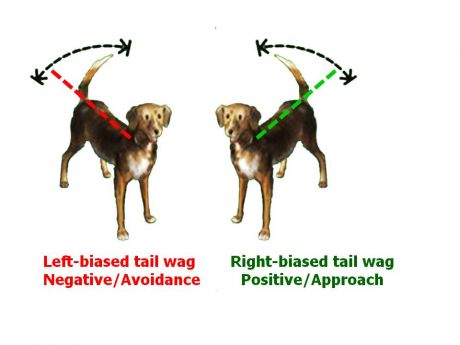
Conditions such as prostate trouble anal gland inflammation and osteoarthritis may cause your pet to hold his tail down to counteract pain and discomfort. He wags for eveyone else and gets up and is excited.
A drinking dog will usually stop drinking if you touch its back.
Why does my dog wag his tail when in trouble. Tail sprains mainly occur from overuse Mahaney says especially with dogs who swim a lot because they tend to use their tail as a rudder as they swim. He says the issue happens because the muscles get fatigued the small joints and ligaments in the tail get stressed and then the tail becomes flaccid. My dog wont wag his tail any more and is having trouble going to the bathroom - Answered by a verified Pet Specialist We use cookies to give you the best possible experience on our website.
By continuing to use this site you consent to the use of cookies on your device as described in our cookie policy unless you have disabled them. When does tail wagging begin. Puppies arent born wagging their tails as cute as that would be.
Tail wagging develops differently in different breeds but it usually begins around three to four weeks into life. The wag of a tail is instinctive in dogs. Its used as part of their varied communication with one another and with humans.
Dogs wag their tails in their sleep because they are in a state of deep sleep. Just like us they experience what is called Rapid Eye Movement REM during their deepest stages of sleep. It is during REM sleep that dreams occur and dogs are not so far removed from our own evolutionary developments.
In animals the sense of touch tactile response interferes with all other activities. A drinking dog will usually stop drinking if you touch its back. A wagging tail fits the same response.
Dogs also cannot hear when you suddenly touch them as. Conditions such as prostate trouble anal gland inflammation and osteoarthritis may cause your pet to hold his tail down to counteract pain and discomfort. Any dog can be affected by a limp tail although dogs with longer tails tend to be affected more often.
My dog doesnt wag his tail for me or get up when I come home. He wags for eveyone else and gets up and is excited. He will bring the ball to me to throw it and will come calmly sit by me when we are home alone i just dont get the impression he likes me very much.
Make Sure To Form A Bond With Your Dog. So if your dogs tail stops wagging when you pet him it probably is that hes relaxed or that the stimulus is a bit much for their brains to do other actions. Still the important thing is for you to continue petting and playing with your dogs.
These are the best ways to form a bond with him. A wagging tail and a few licks are usually a friendly greeting from a dog. A tail lowered and between the legs could indicate fear anxiety or submission.
A slow wag could mean that a dog is. So why does my dog randomly wag its tail. Possible reasons why your dog randomly wags its tail are wanting attention boredom thinking youre giving it something hearing something or rewarding the behavior.
Your dog might actually be doing it for a number of different reasons and it might be due to a combination of them. Nerve damage may also cause the tail to hang limply. Your dog may not be able to wag his tail or even raise it when having a bowel movement.
Skin infections may be a secondary problem with limp tails. If you notice that your dog cannot wag his tail and it hangs limply consult your veterinarian. Limber tail signs vary from dog to dog and may be confused with some form of trauma especially if your dog has been hunting or swimming.
If your dog has overworked tail muscles you may notice the following signs. Completely limp tail from base to tip Partially limp tail held horizontally out from the base with the rest hanging down. Tail wagging stiffly.
A dog who is excited may wag his tail stiffly while jumping spinning or sticking his rump in the air. His excitement may be from a positive source like an upcoming walk or a negative source like an intimidating stranger. A confident dog wanting you to move away will often deliver a low-pitched warning growl.
His body will stiffen and the loose circular wag may become a stiff side-to-side motion. A scared dog who really doesnt want to defend himself may make a high-pitched growl-bark to. A dog will wag his tail for different reasons and it is important to identify the various ways he wags so as not to misinterpret what is going on and put yourself or someone else at risk for being snipped at or bitten.
People wrongly assume a dog wags his tail.
